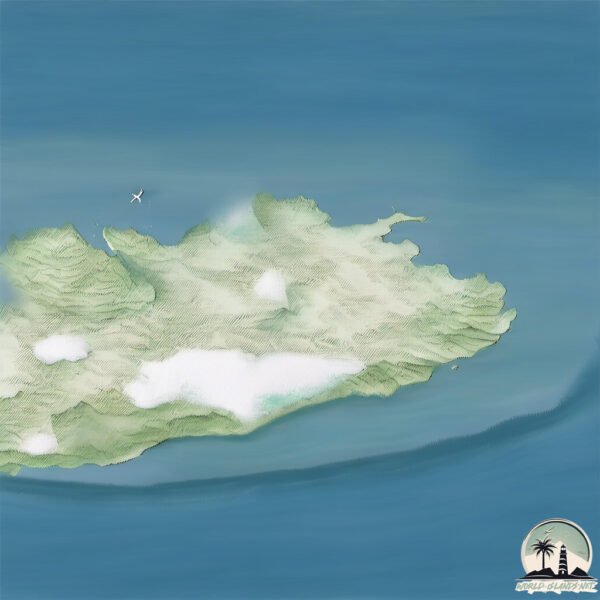Flatey

Welcome to Flatey, a Polar island in the Greenland Sea, part of the majestic Atlantic Ocean. This guide offers a comprehensive overview of what makes Flatey unique – from its geography and climate to its population, infrastructure, and beyond. Dive into the details:
- Geography and Size: Explore the island’s size and location.
- Climate and Weather: Weather patterns and temperature.
- Topography and Nature: Uncover the natural wonders of the island.
- Infrastructure and Travelling: Insights on reaching, staying, and making the most of your visit.
- News and Headlines: Latest News.
Geography and size of Flatey
Size: 1.803 km²
Coastline: 9.9 km
Ocean: Atlantic Ocean
Sea: Greenland Sea
Continent: Europe
Flatey is a Small Island spanning 1.8 km² with a coastline of 9.9 km.
Archipel: –
Tectonic Plate: North America – Covers North America and parts of the Atlantic and Arctic Oceans, characterized by diverse geological features and varying levels of seismic activity.
The geographic heart of the island is pinpointed at these coordinates:
Latitude: 65.5600391 / Longitude: -16.4387488
Climate and weather of Flatey
Climate Zone: Polar
Climate Details: Tundra
Temperature: Cold
Climate Characteristics: The tundra climate features long, extremely cold winters and short, cool summers. Vegetation is limited to mosses, lichens, and small shrubs due to the low temperatures and short growing seasons. Biodiversity is low, but some specialized species thrive.
Topography and nature of Flatey
Timezone: UTC±00:00
Timezone places: Europe/London
Max. Elevation: 86 m
Mean Elevation: 72 m
Vegetation: Deciduous Needleleaf Forest
Tree Coverage: 53%
The mean elevation is 72 m. The highest elevation on the island reaches approximately 86 meters above sea level. The island is characterized by Plains: Flat, low-lying lands characterized by a maximum elevation of up to 200 meters. On islands, plains are typically coastal lowlands or central flat areas.
Dominating Vegetation: Deciduous Needleleaf Forest
Consists of needleleaf trees that shed their needles annually. This type of forest is less common and can be found in certain cold, northern regions. Flatey has a tree cover of 53 %.
Vegetation: 9 vegetation zones – Very Highly Diverse Island
Islands in this range are ecological powerhouses, showcasing a wide array of vegetation zones. Each zone, from lush rainforests to arid scrublands, coastal mangroves to mountainous regions, contributes to a complex and interdependent ecosystem. These islands are often hotspots of biodiversity, supporting numerous species and intricate ecological processes.
Infrastructure and Travelling to Flatey
Does the island have a public airport? no.
There is no public and scheduled airport on Flatey. The nearest airport is Grímsey Airport, located 45 km away.
Does the island have a major port? no.
There are no major ports on Flatey. The closest major port is BUDIR, approximately 40 km away.
The mean population of Flatey is 0 per km². Flatey is Uninhabited. The island belongs to Iceland.
Continuing your journey, Iceland is the next notable island, situated merely km away.
Iceland is classified as Developed region: nonG7: Developed economies outside of the Group of Seven, characterized by high income and advanced economic structures. The level of income is High income: OECD.
News – Latest Updates and Headlines from Flatey
Stay informed with the most recent news and important headlines from Flatey. Here’s a roundup of the latest developments.
Please note: The data used here has been primarily extracted from satellite readings. Deviations from exact values may occur, particularly regarding the height of elevations and population density. Land area and coastline measurements refer to average values at mean high tide.
